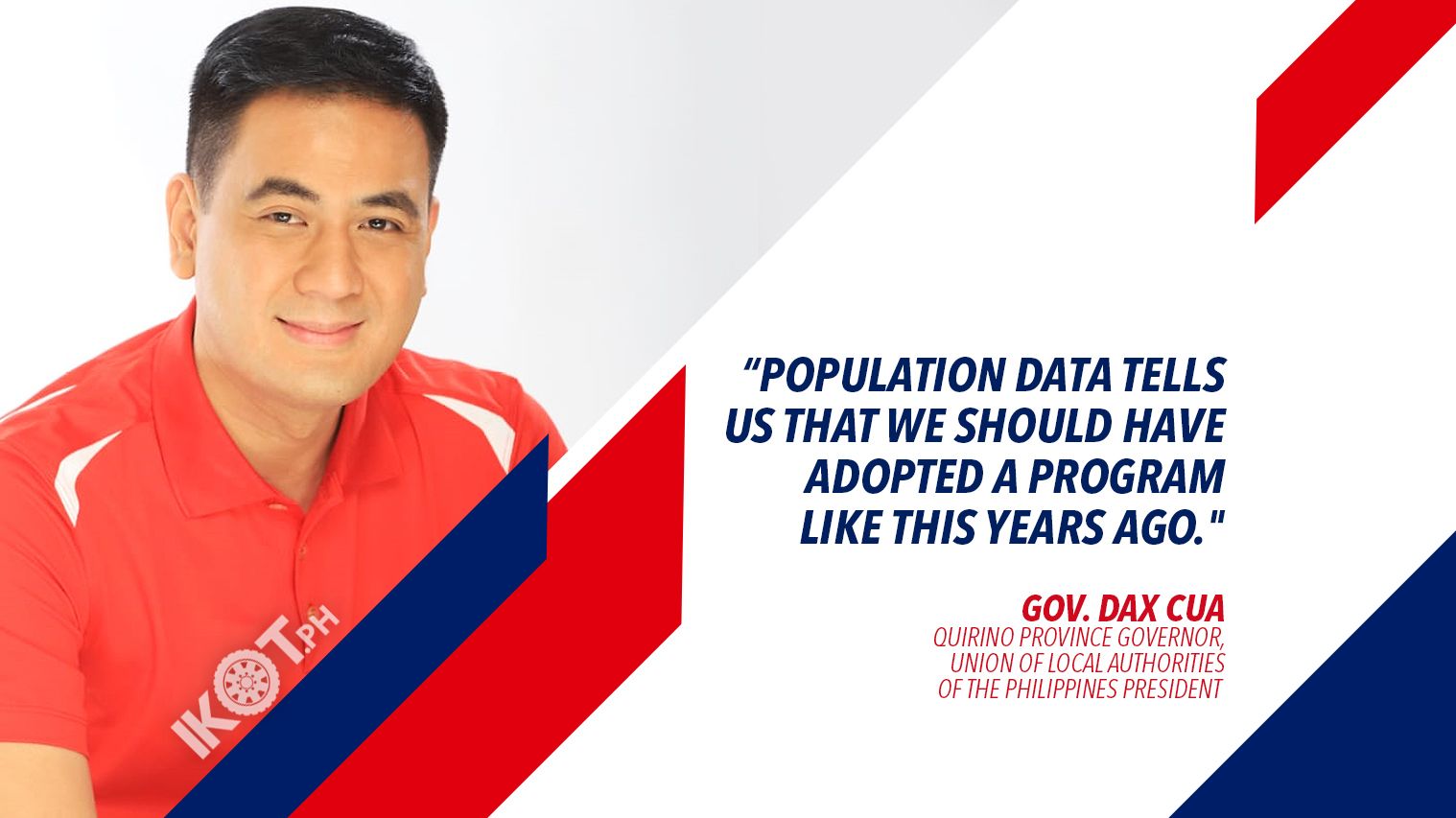Union of Local Authorities of the Philippines (ULAP) national president and Quirino Gov. Dax Cua said he welcomes efforts to review and improve protocols in the Balik Probinsya, Bagong Pag-Asa Program (BP2) to prevent a surge of COVID-19 cases in the provinces, and suggested that the national and local governments work together to improve incentives and better encourage Metro Manila residents to shift to “Buhay Probinsya.”
“Given that Metro Manila is still experiencing a surge of COVID-19 cases, steps have to be taken to ensure that the families that opt to return to the provinces do not have COVID-19,” said Cua.
“We welcome assurances that the national government is taking these steps and reviewing protocols for the Balik Probinsiya program.”
“We welcome assurances that the national government is taking these steps and reviewing protocols for the Balik Probinsiya program.”
Malacañang last Friday informed the media that the government will review its protocols and “consider the required RT-PCR test prior to their return to their hometown.”
Cua reiterated his support for the BP2 Program and stressed that “population data tells us that we should have adopted a program like this years ago.”
“The disparity in the population density of Metro Manila compared to areas in the rest of the country is staggering. The average population density of the country is 336 people for every square kilometer; in the National Capital Region (NCR), it is 21,000,” lamented the former legislator.
Cua pointed out that “even the most congested region after NCR––CALABARZON––has a population density of 850 per square kilometer. Clearly we need to encourage our people to move to the provinces.”
According to Cua, who obtained his business administration degree from the University of the Philippines, “many of our countrymen, if given a choice––if given the same economic opportunities they have in Metro Manila, or better––would choose to live in the provinces.”
“The disparity in the population density of Metro Manila compared to areas in the rest of the country is staggering.”
“Local chief executives and the national government have to work together to define what ‘Buhay Probinsya’ is and make this kind of life attractive to families living in Metro Manila.”
The Quirino chief executive explained that towns and cities in the provinces must show that “Buhay Probinsya” means “living in a place with adequate livelihood, decent housing, and access to quality education––in an environment with an abundance of space, fresh air, and nature.”
“It starts with providing more economic opportunities in the provinces, because our people will naturally go to where the jobs are. We need to adopt incentives that will encourage investments and economic development in the countryside, and we need to invest in the infrastructure that will pave the way for these,” added Cua.
“Handa kami sa ULAP makipagtulungan sa mga ahensya ng gobyerno para buhayin ang mga probinsya at ma-engganyo ang mga pamilya na magbalik-probinsya.”

